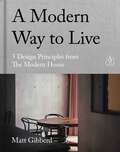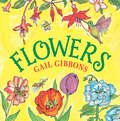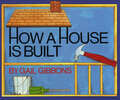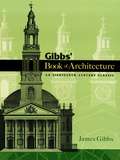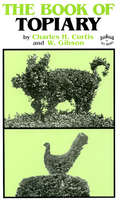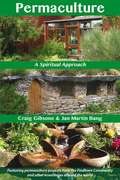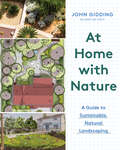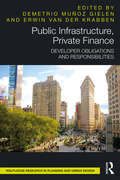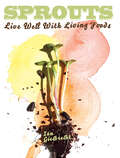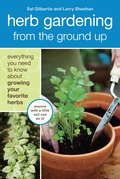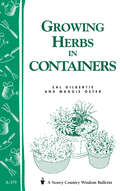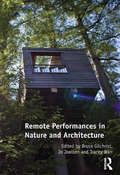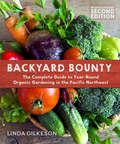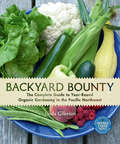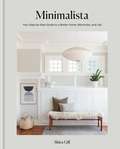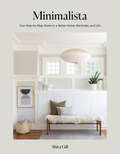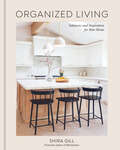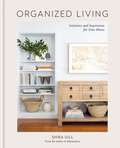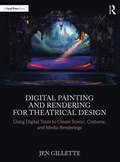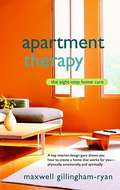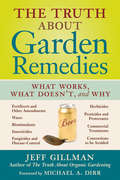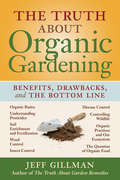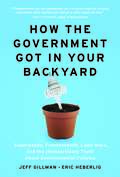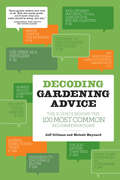- Table View
- List View
A Modern Way to Live: 5 Design Principles from The Modern House
by Matt GibberdBeautifully designed and featuring breathtaking photography, this book from the creator of The Modern House makes the perfect coffee table book and is the ultimate gift for home design enthusiasts 'A source of fascination, inspiration and fantasy' GuardianIn 2005, childhood friends Matt Gibberd and Albert Hill set out to convince people of the power of good design and its ability to influence our wellbeing. They founded The Modern House - in equal parts an estate agency, a publisher and a lifestyle brand - and went on to inspire a generation to live more thoughtfully and beautifully at home.As The Modern House grew, Matt and Albert came to realise that the most successful homes they encountered - from cleverly conceived studio flats to listed architectural masterpieces - had been designed with attention to the same timeless principles: Space, Light, Materials, Nature and Decoration.In this lavishly illustrated book, Matt tells the stories of these remarkable living spaces and their equally remarkable owners, and demonstrates how the five principles can be applied to your own space in ways both large and small. Revolutionary in its simplicity, and full of elegance, humour and joy, this book will inspire you to find happiness in the place you call home.PRAISE FOR THE MODERN HOUSE:'One of the best things in the world' GQ'The Modern House transformed our search for the perfect home' Financial Times'Nowhere has mastered the art of showing off the most desirable homes for both buyers and casual browsers alike than The Modern House' Vogue
Flowers
by Gail GibbonsExplore a lush garden of plant life. . . . from your bookshelf! Packed with science concepts, this picture book will tell you everything you need to know about flowers.A Eureka! Nonfiction HonoreeWith her signature combination of clearly-labeled diagrams, infographics, and accessible language, Gail Gibbons introduces the basics and life cycle of flowers. Sweet-smelling violets, delicate roses, vibrant tulips-- and many more-- come alive on the profusely illustrated pages.Including information on common regional species, flowers' habitable ranges, basic flower care and cultivation, and flower anatomy and pollination, this picture book introduction is perfect for both budding gardeners and aspiring scientists. Explore a worldwide garden without ever leaving home!Beloved by educators, nonfiction superstar Gail Gibbons has covered seeds, farming, vegetables, fruits, and much more for children. According to the Washington Post, "Gail Gibbons has taught more preschoolers and early readers about the world than any other children's writer-illustrator."This Explore the World . . . with Gail Gibbons title promotes active learning, good citizenship, and student leadership.
How a House Is Built
by Gail GibbonsHouses are built with many different materials, and in many shapes and sizes. Step by step, this picture book explains how homes are built—from the architect's plans through the arrival of a happy family. The many processes of construction are explained with simple language and bright, clear illustrations, perfect for kids starting to wonder about how the world around them works. Many different careers—including carpenters, plumbers, electricians, and landscapers—are introduced, each doing their part to bring the picture wood-frame house to life. A great read for kids who love construction sites, or who can't get enough of Building a House by Byron Barton. According to The Washington Post, Gail Gibbons "has taught more preschoolers and early readers about the world than any other children's writer-illustrator." Ms. Gibbons is the author of more than 100 books for young readers, including the bestselling titles From Seed to Plant and Monarch Butterfly. Her many honors include the Washington Post/Childrens Book Fuild Nonfiction Award and the NSTA Outstanding Science Trade Book Award.
Gibbs' Book of Architecture: An Eighteenth-Century Classic
by James GibbsOne of England's most respected and influential architects, James Gibbs was born in Scotland, studied in Rome, and left a legacy of design the world will treasure forever. His legendary 1728 folio, a sprawling gallery of Gibbs's magnificent drawings, perspectives, and blueprints, is a brilliant testimony to his remarkable talent. Profusely illustrated, the volume features such notable commissions as London's St. Martin in the Fields -- the inspiration for many steeple churches of the colonial period in America; St. Mary le Strand, his first public building; Marybone Chapel; The Church of Allhallows in Derby; plus Gibbs's first commission, an addition for King's College at Cambridge. His most outstanding accomplishment may be the circular Radcliffe Library at Oxford, for which he received a Master of Arts. Also included here are detailed floor plans, plus fine drawings of decorative marble cisterns, ornamental iron gates, stately funeral monuments, and much more. Essential for an understanding of classic architecture, this stunning edition should grace the bookshelf of every architect, as well as architectural students, teachers, and historians.
Let There Be Light: A Book about Windows
by James Cross GiblinWindows are our eyes on the world. Through them we can gaze at our surroundings and, looking out, feel connected to the larger world outside. Windows transform our interiors, filling a room with light and letting cool breezes in. Windows protect us. But windows are vulnerable, too. A well-aimed rock can shatter one in an instant. For as long as there have been buildings, there have been windows. A simple roof hole, a narrow slit-these served as windows in early structures. Later windows might be covered with anything from mica to paper to a fish bladder; the transparent pane of glass we take for granted today took many centuries to develop. In the Middle Ages, with the achievement of stained glass, windows became the focus of a great outpouring of artistic expression. Today the "walls of glass" of the modern skyscraper represent the ultimate window. In this wide-ranging history, we also learn of the role windows have played in many dramatic events, from castle sieges to the infamous Kristallnacht of Nazi Germany to riots that scarred American cities in the 1960s. With the aid of splendid pictures, James Cross Giblin traces the intriguing development of windows-in our homes, our houses of worship, our offices, and public buildings, and shows how they illuminate our lives.
The Book of Topiary
by W. Gibson Charles H. CurtisTopiary, the art of trimming hedges, shrubs, and trees into ornamental shapes, is perhaps the most distinct and fascinating branch of landscape horticulture.Its best known example, the palace gardens of Versailles, stands as a splendid monument to perfection, but today many a finely clipped privet and sheared yew are to be found in the humbler gardens of rural England. This book, first published in 1904, is a classic in the subject, written by two foremost experts of the day: Charles H. Curtis, a Fellow of the Royal Horticultural Society and formerly at Kew Gardens near London, and W. Gibson, head gardener of one of the finest topiary gardens in Britain at Levens Hall. Gibson here draws on a wealth of practical experience to provide sound advice to aspiring topiarists. His practical sections include The Formation of a Topiary Garden, Planting, and TheTraining of Young Trees. Curtis traces the long history of topiary from itsearly origins in ancient Greece. As Homer's description (rendered by Pope) has it: Here interwoven branches form a wall, And from the living fence green turrets rise; There ships of myrtle sail in seas of box; A green encampment yonder meets the eye. The 1500s saw the dawn of the "golden age" of topiary. It extravagances were manifold and characterized the gardens walked by Elizabeth I,Shakespeare, and Raleigh. The extraordinary hedge labyrinth in the grounds of Hampton Court survives today for the pleasure and delight of countless visitors.Any fashion taken to excess leads to an inevitable reaction; and so it was that topiary became the butt of the eighteenth critics. Addison and Pope employed their razor wit in its ridicule. The humor of Pope's satirical description is hard to escape: "St. George in box; his arm scarce long enough, will be in condition to stick the dragon by next April. . . . A quickset hog, shot up into a porcupine, by its being forgot a week in rainy weather." This century has seen a welcome revival of the art. Wealthy patrons of horticulture have laid outtopiary gardens, designed to be in harmony with their formal surroundings and with the natural features of the grounds. There are also many private enthusiasts who, inspired by the feats of the masters, skillfully train their garden hedges into spirals, serpentine columns, and even spires topped by peacocks. Here then is an intriguing read on a too little known subject. The numerous illustrations included add to the interest, and practical instructionsare offered for those tempted to take up the scissors.
Permaculture: A Spiritual Approach
by Craig Gibsone Jan Martin BangPermaculture design as divine creative activity. Permaculture looks for the patterns embedded in our natural world as inspirations for designing solutions to the many challenges we are presented with today. It is a philosophical, spiritual and practical approach to the use of the land, integrating microclimate, functional plants, animals, soils, water management and human needs into intricately connected, highly productive systems. In essence, permaculture uses observation as basis for creating sustainable and effective human settlements. The authors discuss the components Earthshare, Fairshare and Peoplecare, with a specific emphasis on the spiritual aspects of the design process. Topics range from soil and plants, energy sources and house design to alternative economics, group process, governance, and spiritual nurturing and enquiry. Examples of existing permaculture structures from around the world, most notably from the Findhorn Community Eco-Village, bring the concepts to life. First-hand accounts of how people got started on their permaculture project lend a personal touch. The first book to look at the spiritual aspects as well as the practical implementation of permaculture design.
At Home with Nature: A Guide To Sustainable, Natural Landscaping
by John GiddingGo from manicured lawn to eco-conscious garden with this step-by-step guide from HGTV star John Gidding. Increased awareness of the environment and an ever-present interest in curb appeal means that homeowners are eager for more sustainable, natural landscaping. And why shouldn’t they be? In addition to supporting local flora and fauna, ditching grass for lush, native plants helps lower water bills and results in self-sustaining gardens long-term. In John Gidding’s At Home with Nature, American homeowners will find thorough blueprints to reap these benefits and bring their dream garden to life. Complete with specific information for every U.S. bioregion, a glossary of native plants, illustrated yard renderings and photos, and detailed explanations of suburban codes, this book has examples and techniques to build responsible natural spaces. And as an HGTV star with over a decade of design experience, Gidding is the landscaping expert readers need to get the job done. At Home with Nature is the ultimate resource for creating beautiful and beneficial home gardens.
Public Infrastructure, Private Finance: Developer Obligations and Responsibilities
by Demetrio Muñoz Gielen Erwin Van Der KrabbenTraditionally, the public sector has been responsible for the provision of all public goods necessary to support sustainable urban development, including public infrastructure such as roads, parks, social facilities, climate mitigation and adaptation, and affordable housing. With the shift in recent years towards public infrastructure being financed by private stakeholders, the demand for transparent guidance to ensure accountability for the responsibilities held by developers has risen. Within planning practice and urban development, the shift towards private financing of public infrastructure has translated into new tools being implemented to provide joint responsibility for upholding requirements. Developer obligations are contributions made by property developers and landowners towards public infrastructure in exchange for decisions on land-use regulations which increase the economic value of their land. This book presents insight into the design and practical results of these obligations in different countries and their effects on municipal financial health, demonstrating the increasing importance of efficient bargaining processes and the institutional design of developer obligations in modern urban planning. Primarily written for academics in land-use planning, real estate, urban development, law, and economics, it will additionally be useful to policy makers and practitioners pursuing the improvement of public infrastructure financing.
Sprouts: Live Well with Living Foods (Diy Ser.)
by Ian GiesbrechtWant to enjoy delicious, homegrown food year-round? Sprouts offers an accessible, holistic, and unique guide to incorporating microgreens and sprouted foods into any lifestyle. In the modern age, many of us crave a healthier, simpler diet and a closer connection to our food sources, and sprouting can help us to bridge those divides. Farmer and food activist Ian Giesbrecht's straightforward and easy-to-understand theory of sprouting is accompanied by practical instructions, illustrations, charts, and recipes, covering many types of seeds and styles of sprouting. Suitable for anyone with an interest in living and raw food diets, indoor gardening, or simply the joy of growing something, this book contains enough information and inspiration to get you sprouting for a healthier, happier life.
Herb Gardening from the Ground Up
by Sal Gilbertie Lauren Jarrett Larry SheehanGarden-fresh herbs impart flavor and fragrance that dried, packaged products simply can't. Now, anyone with access to a few square yards of soil (or even a sunny patio or windowsill) can enjoy the punch and pungency that only come from fresh herbs, hand-picked from the garden. Herb Gardening from the Ground Up demonstrates how to design, seed, and nurture 38 culinary herb gardens that are delightful to the eye as well the palate. Designed to supply herbs for a wide range of flavors as well as a pleasing balance of colors, there are gardens to suit every taste and cooking trend, including a French chef's repertoire, an Italian trattoria's menu, the aromatic seasonings of Asia, the closer-to-home flavors of American barbecue, and the piquant profiles for a Tex-Mex feast. There are herbs for flavoring fish and game, soups and salads, bread and other baked goods, and, for the mixologists among us, even herbs for the home cocktail bar. Herb Gardening from the Ground Up offers historical insight, provides starting-from-scratch, season-to-season basics for planting in the present, and looks forward to the bright future of urban and suburban growing trends.
Growing Herbs in Containers: Storey's Country Wisdom Bulletin A-179
by Sal Gilbertie Maggie OsterSince 1973, Storey's Country Wisdom Bulletins have offered practical, hands-on instructions designed to help readers master dozens of country living skills quickly and easily. There are now more than 170 titles in this series, and their remarkable popularity reflects the common desire of country and city dwellers alike to cultivate personal independence in everyday life.
Remote Performances in Nature and Architecture
by Bruce Gilchrist Jo JoelsonOutlandia is an off-grid artists’ fieldstation, a treehouse imagined by artists London Fieldworks (Bruce Gilchrist & Jo Joelson) and designed by Malcolm Fraser Architects, situated in Glen Nevis, opposite Ben Nevis. It is performative architecture that immerses its occupants in a particular environment, provoking creative interaction between artists and the land. This book explores the relationship between place and forms of thought and creative activity, relating Outlandia and the artists there to the tradition of generative thinking and making structures that have included Goethe’s Gartenhaus in Weimar, Henry Thoreau's cabin at Walden Pond and Dylan Thomas’s writing shack in Laugharne. Based on a series of residencies and radio broadcasts produced by London Fieldworks in collaboration with Resonance 104.4fm, the Remote Performances project enabled twenty invited artists to consider and engage in transmissions, sound performances and dialogues on their artmaking strategies immersed in this specific rural environment of mountain, forest and river; flora and fauna. Some artists engaged in dialogue with people living and working in the area with a range of specialisms and experience in, for examples, forestry, mountain culture, wildlife, tourism, and local history. This book explores the ways in which being in the field impacts on artists and permeates through to the artworks they create. It considers the relationship between geography and contemporary art and artists’ use of maps and fieldwork. It charts these artists’ explorations of the ecological and cultural value of the natural environment, questioning our perceptions and relationships to landscape, climate and their changes. The book is an inspiring collection of ways to think differently about our relationship with the changing natural environment. The book includes essays by Jo Joelson, Francis McKee, Tracey Warr and Bruce Gilchrist, and texts, images and drawings by the artists: Bram Thomas Arn
Backyard Bounty: The Complete Guide to Year-Round Organic Gardening in the Pacific Northwest
by Linda Gilkeson&“Very likely the best book ever written on growing food in the Pacific Northwest, and it sets a whole new standard for garden writing.&”—Mark MacDonald, West Coast Seeds Grow more food, with less work, in any yard—now completely revised and expanded! Are you itching to start your own garden or grow more in the one you have, but feel that gardening is too challenging or time-consuming for your busy schedule? Now completely updated and expanded, Backyard Bounty will demystify gardening, bringing it back to the down-to-earth, environmentally practical activity that anyone can enjoy. Author and master gardener Linda Gilkeson covers everything you&’ll need to grow a successful garden, including: Planning your garden and preparing the soil Organic fertilizers and simplified composting Planting for winter harvests and intensive planting schedules Comprehensive information on pests, diseases, and working with an unstable climate Greenhouses, tunnels and containers Organic pest management. Packed with a wealth of information specific to the Pacific Northwest, this complete guide emphasizes low-maintenance methods, covers problems related to common pests and climate concerns, includes a monthly garden schedule for year-round planting and harvesting, and features plant profiles for everything from apples to zucchini. Perfect for novice and experienced gardeners alike, Backyard Bounty shows how even the smallest garden can produce a surprising amount of food twelve months of the year. &“Backyard Bounty is remarkably thorough, from roots to pests to pruning to crowns, and it inspires even the experienced grower. Just like homemade soil for a bedding plant, this book is loaded with the richness we need in order to feed ourselves.&”—Lyle Estill, author of Backyard Biodiesel
Backyard Bounty
by Linda GilkesonThis practical guide is packed with simple, low-maintenance methods to produce the most organically grown food all year round from any home garden. With advice on soil preparation, composting, seeding, watering, mulching, pruning, winter crop planting schedules, greenhouses and more, as well as a wealth of information specific to the West Coast climate, Backyard Bounty will get you growing.
Minimalista: Your step-by-step guide to a better home, wardrobe and life
by Shira Gill***"I identified with so many of the important lessons Shira teaches in Minimalista. Now I'll know what book to recommend when people ask me to help them on their journey towards minimalism!" - Garance Doré, New York Times Best Selling Author of Love Style LifeElevate your personal style, trim your belongings, and transform your life, one room at a time, with this visionary lifestyle and home organisation book from organising expert, Shira Gill.As a professional home organiser with clients ranging from students to multi-millionaires, Shira Gill observed that clutter is a universal stress trigger. Over the years she created a signature decluttering and organisation process that promotes sustainability, achieves lasting results, and can be applied to anyone, regardless of their space or lifestyle. Rather than imposing strict rules and limitations, Shira redefines minimalism as having the perfect amount of everything - for you - based on your personal values and the limitations of your space. Now, in Minimalista, Shira shares her complete toolkit for the first time, built around five key steps: Clarify, Edit, Organize, Elevate, and Maintain. Shira teaches that the most important thing you can do is start, and that small victories, achieved one at a time, will snowball into massive transformation. Broken into small, bite-sized chunks, Minimalista makes it clear that if the process is fun and easy to follow, anyone can learn the principles of editing and organisation.The Minimalista Manifesto· Buy less; live more.· Invest in high quality + solid craftsmanship.· Opt for natural, sustainable materials.· Treat your space + your stuff with respect.· Shop your own home before hitting the stores.· Celebrate life's little luxuries: fresh flowers, hot water, a good meal with friends.· Try to repair instead of replace.· Embrace negative space and dispose of unwanted items responsibly.· Create a home that supports your personal goals + core values.· Be the gatekeeper of your home.· Say "no" to swag, freebies, and hotel samples.· Say "no" to excess and "yes" to enough.
Minimalista: Your Step-by-Step Guide to a Better Home, Wardrobe, and Life
by Shira GillElevate your personal style, trim your belongings, and transform your life, one room at a time, with this visionary lifestyle and home organization book from professional organizing expert, Shira Gill.&“Warm, funny, and direct, Shira builds you up while helping you edit down to the best version of yourself.&”—Stacy London, New York Times bestselling author of The Truth About StyleAs a professional home organizer with clients ranging from students to multi-millionaires, Shira Gill observed that clutter is a universal stress trigger. Over the years she created a signature decluttering and organization process that promotes sustainability, achieves lasting results, and can be applied to anyone, regardless of their space or lifestyle. Rather than imposing strict rules and limitations, Shira redefines minimalism as having the perfect amount of everything—for you—based on your personal values and the limitations of your space. Now, in Minimalista, Shira shares her complete toolkit for the first time, built around five key steps: Clarify, Edit, Organize, Elevate, and Maintain. Once you learn the methodology you'll dive into the hands-on work, choose-your-own-adventure style: knock out a room, or even a single drawer; style a bookshelf; donate a sweater. Shira teaches that the most important thing you can do is start, and that small victories, achieved one at a time, will snowball into massive transformation. Broken into small, bite-sized chunks, Minimalista makes it clear that if the process is fun and easy to follow, anyone can learn the principles of editing and organization.
Organized Living: Solutions and Inspiration for Your Home [A Home Organization Book]
by Shira GillKickstart your organized life with this inspiring visual guide from the author of Minimalista.&“A fresh, global, and beautifully diverse perspective on calming the clutter.&”—Kelli Lamb, author of Home with Rue and editorial director of RuePeople are naturally curious about the homes of professional organizers. Organized Living was inspired by Shira's desire to provide a glimpse into a rarely-seen world: The homes of people who organize others. Shira showcases the homes of twenty-five international home organizers, offering an exclusive behind-the-scenes look into this meticulously kept world. Organized Living introduces you to the aspirational spaces of the most organized people in the world, the organizers themselves, and the passion that fuels their work. Through stunning images and absorbing interviews, you&’ll gain expert tips and resources, loads of visual inspiration, and clever organizing hacks you can use in your own home, such as:• Ditching the packaging• Choosing stylish storage• Elevating the most neglected spaces• Putting things away, right awayThrough books, TV shows, and social media platforms, home organizers have been elevated as top lifestyle influencers and have cemented their place in the cultural zeitgeist. And Shira Gill, the organizer of organizers, is the perfect tour guide to walk us through these professional organizers&’ homes.If you&’re seeking less clutter, overwhelm, and stress in your life, and are looking to create more time and energy for the things that matter most, Organized Living is your chance to learn directly from the best in the business.
Organized Living: Solutions and Inspiration for Your Home
by Shira GillGet inspired to level up your home organization with tips, Q&As, and photos of the living spaces of twenty-five international home organizers, from the author of Minimalista. Whenever people learn that Shira Gill is a professional home organizer, they always lean in and ask the same question: "So, is your home really that organized?" Spoiler alert: the answer is yes. Organized Living was inspired by Shira's desire to give others a glimpse into this rarely-seen world: The ultra-organized homes of people who organize others. There are plenty of books highlighting the spaces and stories of designers, entrepreneurs, and creatives; here, Shira showcases the homes of home organizers, from London to Lisbon, Paris to Portland, giving you an exclusive behind-the-scenes look into this meticulously kept world. Organized Living will introduce you to not only the aspirational spaces of the most organized people in the world, but also to the organizers themselves and the passion that fuels their work. Through images and interviews, you'll gain expert tips and resources, loads of visual inspiration, and clever organizing hacks you can use in your own home, such as: - Ditching the packaging - Choosing stylish storage- Elevating the most neglected spaces - Putting things away, right away People are naturally curious about the homes of professional organizers. With books, TV shows, and the arrival of viral and global celebrity organizer, Marie Kondo, home organizers have been elevated as top lifestyle influencers. Through blogs, podcasts, and social media platforms like Instagram, home organizers have further cemented their place in the cultural zeitgeist. And Shira Gill, the organizer of organizers, is the perfect tour guide to walk us through these professional organizers' homes featured in her latest book.
Digital Painting and Rendering for Theatrical Design: Using Digital Tools to Create Scenic, Costume, and Media Renderings
by Jen GilletteDigital Painting and Rendering for Theatrical Design explores the tools and techniques for creating dazzling, atmospheric, and evocative digitally painted renderings for scenic, costume, and projection/integrated media design. By focusing on technique rather than the structure of a particular software, this book trains theatrical designers to think and paint digitally, regardless of the software or hardware they choose. The text begins with the construction of the artist’s physical and digital workspace, then delves into an explanation of tool functionality, technique-building exercises, and examples from professional theatrical designers to help contextualize the concepts presented. Each chapter gradually progresses in complexity through skill-building exercises and advanced tool functionality, covering concepts like brush construction, various forms of masking, and layer interaction. The book explores various methods of constructing a digital rendering, including producing digital paintings that look like traditional media and photo bashing – the practice of using extant photographs to create a collaged image. Concepts are contextualized throughout the text using illustrations, quotes, and interviews with working professional designers. This beautifully illustrated guide is written for professional theatrical artists, students of theatrical design, and other visual artists looking to broaden their digital painting skillset.
Apartment Therapy: The Eight-Step Home Cure
by Maxwell Gillingham-RyanFrom not enough space and too many things to not knowing what color to paint the living room walls, many of us struggle with our homes. Now Maxwell Gillingham-Ryan, frequent makeover expert on HGTV’s Mission: Organization and Small Spaces, Big Style, shares the do-it-yourself strategies that have enabled his clients and fans to transform their apartments into well-organized, beautiful places that suit their style and budget. Week by week,Apartment Therapywill guide you to treat common problems, eliminate clutter, and revamp even the tiniest space. Here is an eight-step process that includes: A therapeutic questionnaire to help you get in touch with your personal taste and diagnose your home’s physical, emotional, and energy flow issues A prescription with recommendations for each room based on your needs and lifestyle–including tips on how to use color, lighting, and accessories A treatment plan, including regular maintenance schedules to ensure the ongoing health of your space Illustrations of floor plans and decorative examples that allow you to visualize concepts before you begin With surprising ease and without elaborate professional help,Apartment Therapywill help you clear a path through disorder and indecision–to reveal a home you’ll love. From the Trade Paperback edition.
The Truth About Garden Remedies: What Works, What Doesn't & Why
by Jeff GillmanCan beer make plants grow? How about buttermilk? Or music—classical or rock? Are you sure about planting trees in deep holes? And how about chasing insects with hot sauce and stopping slugs with eggshells? Whether in ancient books, on television, or in gardening publications, remedies for all your garden woes are here for the taking: the challenge is to know what will work and what won't. Fearlessly conducting original experiments and harvesting wisdom from the scientific literature, horticulturalist Jeff Gillman assesses new and historic advice and reveals the how and why‚ and sometimes the why not‚ for more than 100 common and uncommon gardening practices. The results will surprise even experienced gardeners.
The Truth About Organic Gardening: Benefits, Drawnbacks, and the Bottom Line
by Jeff GillmanGardeners tend to assume that any organic product is automatically safe for humans and beneficial to the environment—and in most cases this is true. The problem, as Jeff Gillman points out in this fascinating, well-researched book, is that it is not always true, and the exceptions to the rule can pose a significant threat to human health. To cite just one example, animal manures in compost can be a source of harmful E. coli contamination if imporperly treated. Gillman's contention is that all gardening products and practices—organic and synthetic—need to be examined on a case-by-case basis to determine both whether they are safe and whether they accomplish the task for which they are intended.Ultimately, Gillman concludes, organic methods are preferable in most situations that gardeners are likely to encounter. After reading this eye-opening book, you will understand why, and why knowledge is the gardener's most important tool.
How the Government Got in Your Backyard: Superweeds, Frankenfoods, Lawn Wars, and the (Nonpartisan) Truth About Environmental Policies
by Jeff Gillman Eric HeberligBiotechnology—the future or a genetic time bomb? Renewable fuels—the key to cleaner air or just corporate welfare? Greenhouse gasses—baking the earth to death or just a needless worry? Plant patents—improving gardens and farms or just profiteering? When you stop to think about it, the government has its hand in every important environmental issue. And with the left and the right raucously disagreeing about whether the government’s policies are for good or for evil, it’s impossible for a concerned citizen to know what to think.How the Government Got in Your Backyard distills the science, the politics, and the unbiased, nonpartisan truth behind hot-button environmental issues from pesticides to global warming. By clearly representing what the left says, what the right says, what the science is, and what the facts are, Gillman and Heberlig don’t set out to provide the answer—they light the path so concerned citizens can uncover their own true and informed opinion. In this season of political discontent, the unbiased truth about environmental policies—free of political agendas—is as refreshing as it is fascinating.How the Government Got in Your Backyard is not for Republicans or Democrats, liberals or conservatives. It’s for anyone who is ready to get to the bottom line.
Decoding Gardening Advice: The Science Behind the 100 Most Common Recommendations
by Jeff Gillman Meleah MaynardCovering more than 100 universal gardening "dos and don'ts," Decoding Gardening Advice is the first book to provide gardeners with the real answers. Jeff Gillman, the bestselling author of The Truth About Garden Remedies, and Meleah Maynard back up every good recommendation with sound horticultural and botanical science. Decoding Gardening Advice is the first and only hard-hitting, evidence-based book that every gardener needs for definitive advice on everything from bulbs, annuals, and perennials to edibles, trees, and soil care.
